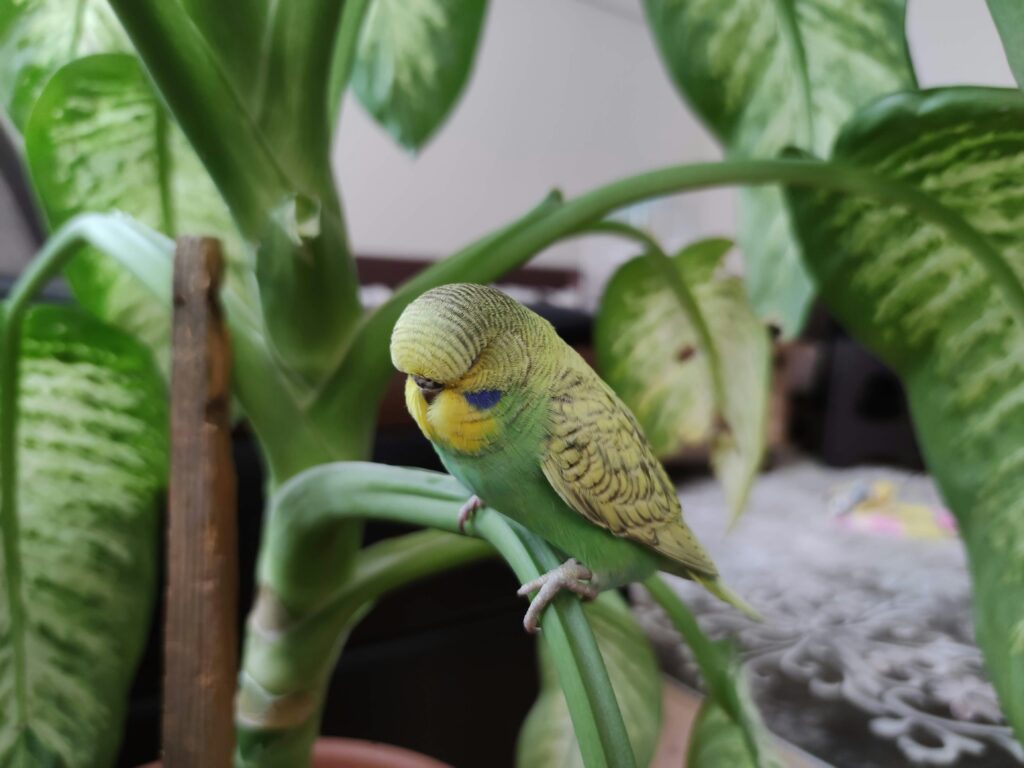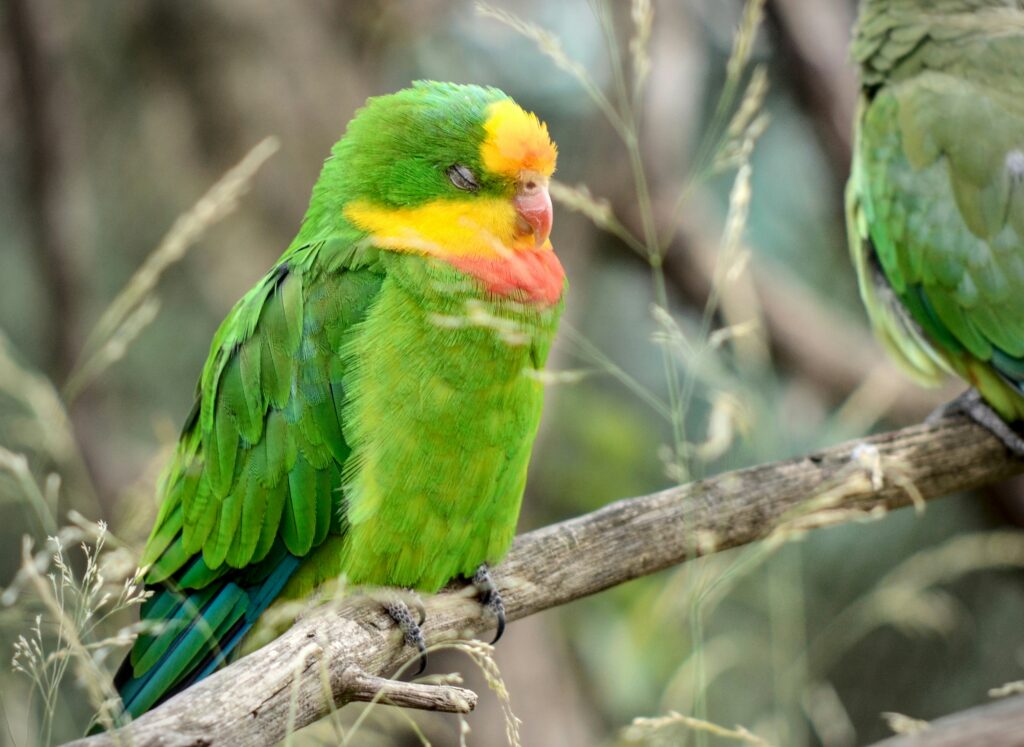Welcome to the enchanting world of our feathered friends! As devoted parrot enthusiasts, we often find ourselves captivated by the whimsical mysteries of our avian companions. One intriguing aspect that sparks curiosity and warmth is the sleeping habits of parrots. In this detailed exploration, we embark on a delightful journey to uncover the secrets behind “How Does Parrot Sleep” Let’s investigate the pillow talk and wonderland delights that add to our parrots’ truly magical sleep.

Understanding the Basics of Parrot Sleep:
Before we explore the intricacies of parrot sleep, it’s essential to grasp the basics. Parrots, being highly intelligent creatures, have unique sleep patterns that differ from other animals. Much like humans, they experience both REM (Rapid Eye Movement) and non-REM sleep cycles. However, the duration and frequency vary based on factors such as species, age, and environmental conditions.
Creating the Perfect Sleep Environment:
To ensure your parrot enjoys a peaceful night’s rest, it’s crucial to create an optimal sleep environment. Begin by providing a comfortable and secure sleeping space. Parrots are known to appreciate cozy corners, so consider adding a soft perch or a snug nest box. Dimming the lights in the evening helps signal bedtime, mimicking the natural sunset in their native habitats.

Nighttime Rituals and Pillow Talk:
Parrots are creatures of habit, and establishing a consistent nighttime routine contributes to their overall well-being. Engage in some gentle “pillow talk” by speaking softly to your parrot before bedtime. This not only fosters a sense of security but also strengthens the bond between you and your feathered companion. Offering a favorite toy or treat can make this nightly ritual even more enjoyable.
The Fascinating Positions of Parrot Sleep:
Observing the various sleep positions of parrots is like witnessing a miniature ballet. From tucking their heads under their wings to balancing on one foot, each posture tells a unique story. Some parrot species even sleep upside down, showcasing their adaptability and comfort in their surroundings. As we delve into “How Does Parrot Sleep,” these charming positions add an extra layer of delight to our understanding.
Nighttime Vocalizations:
Pillow talk takes on a literal meaning when it comes to parrot vocalizations at night. Some parrot species are known to produce soft chattering sounds or gentle murmurs as they settle into their dreams. While this can be endearing for many pet owners, it’s essential to distinguish between normal nighttime vocalizations and signs of distress. Understanding your parrot’s unique soundscape is crucial for fostering a peaceful sleep environment.
The Role of Dreamland Delights in Parrot Well-being
Dreamland for parrots is not just a realm of unconsciousness; it’s a vital component of their overall health. During sleep, parrots consolidate memories, process information, and rejuvenate both physically and mentally. As responsible caregivers, providing an environment conducive to restful sleep contributes significantly to our parrots’ well-being.
Tips for a Restful Night’s Sleep:
- Consistent Bedtime Routine: Establishing a predictable bedtime routine helps signal to your parrot that it’s time to unwind and settle down for the night.
- Comfortable Sleeping Area: Ensure your parrot’s sleeping area is comfortable, with a variety of perches and perhaps a cozy sleeping hut.
- Proper Light Management: Mimic natural light cycles by gradually dimming the lights in the evening, creating a conducive atmosphere for sleep.
- Avoid Disturbances: Shield your parrot from unnecessary disturbances during nighttime hours. This includes minimizing loud noises and sudden disruptions.
- Dreamland Diet: Explore the connection between diet and sleep quality in parrots. Certain foods may promote better sleep, and understanding nutritional needs can enhance overall well-being.
- Parrot Sleep Disorders: Delve into common sleep disorders affecting parrots, such as night frights or insomnia. Recognizing and addressing these issues is crucial for maintaining your parrot’s health and happiness.
- Interactive Bedtime Activities: Discover engaging activities that can be incorporated into your parrot’s bedtime routine. Interactive play and mental stimulation contribute to a more satisfying sleep experience.
- Monitoring Parrot Sleep Patterns: Utilize modern technology, such as bird sleep monitors, to track and analyze your parrot’s sleep patterns. This information can offer valuable insights into their health and behavior.
How Does Parrot Sleep- Video Tutorial
Conclusion
In conclusion, the world of parrot sleep is a captivating realm filled with pillow talk, dreamland delights, and charming sleep positions. As guardians of these remarkable creatures, understanding “How Does Parrot Sleep” is not only a fascinating journey but also a crucial aspect of responsible parrot care. By incorporating the tips and additional insights shared in this comprehensive article, you can enhance the quality of your parrot’s sleep, fostering a happy and healthy avian companion. Sweet dreams to you and your feathered friend!
